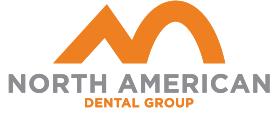Before the pandemic, it was not unusual for Tiffany Foy and a team of other dental hygienists to visit schools in rural and urban parts of Oregon to treat the teeth of thousands of children in a year.
Many of the children they examined had cavities, painful abscesses and “big holes” in their teeth, said Ms. Foy, who works at Advantage Dental, a nonprofit organization that provides oral health care regardless of a patient’s income or insurance.
In March, the program was abruptly suspended after the state shut down in-person learning to help slow the spread of the coronavirus. Ms. Foy said she and her fellow hygienists had not been back in schools since then.
“They could have a mouthful of cavities and the parents aren’t even aware,” Ms. Foy said. “I worry about that. I worry about neglect.”
The disproportionate effect of school closures on low-income children, who are less likely to have access to computers, home internet connections and direct instruction from teachers, has been well documented. Less recognized are the effects of school closures on children’s oral health. The closures have suspended regular dental health visits in schools from rural Oregon to New York State, according to specialists in the field.
Piperlea Chico, a dental hygienist and director of the school-based dental program at Hudson Headwaters Health Network in New York, said that 2,000 to 2,500 children near the Adirondack Mountains had been treated annually since the program began nearly four years ago.
School visits were suspended in April, and though many schools in the region reopened this month, state health officials have not given hygienists permission to return, Ms. Chico said.
“We’re somewhat at a standstill,” she said. “It’s really an essential service. We identify a lot of needs for these children, and we help provide a lot of help and prevent a lot of disease.”
Hygienists typically examine students in classrooms, gyms or nurses’ offices, where they look for cavities, provide fluoride treatments and apply sealants — thin, protective coatings that adhere to the chewing surface of back teeth. Children receive free toothbrushes and toothpaste and are taught proper dental care, said Myechia Minter-Jordan, president and chief executive of DentaQuest Partnership for Oral Health Advancement and Catalyst Institute, which serves about 70,000 children a year across the country
Since the pandemic suspended many of the programs, the organization has been reaching out to school districts and state health officials to find other ways to get care to children, including online checkups.
“We’re extremely concerned,” Dr. Minter-Jordan said.
Children without access to proper care “haven’t been able to learn because they were in pain or they were so embarrassed by their poor dentition that they would cover their faces,” she said.
Ms. Foy, who lives in Bend, Ore., recalled treating one high-school-age student whose mouth was rife with cavities.
“I asked her, ‘Why haven’t you gotten to the dentist?’ She told me her family didn’t have gas to drive her to the dentist,” she said. “It broke my heart.”
Maria Campos, a mother of three girls in Houston, said that her daughters’ school district had shut down in-person learning but that the dental program that sent hygienists to visit students had continued.
All three girls, ages 8, 13 and 17, received their regular cleanings last month at a mobile station that hygienists set up in a school parking lot.
“Thank God for it,” said Ms. Campos, a stay-at-home mother whose husband drives a food delivery truck. In the past, she has had to use her credit card to pay for her children’s dental care, racking up hundreds of dollars in debt.
“It’s a huge blessing having these programs in the schools because dental care around here is very expensive,” Ms. Campos said.
Teachers say hygienists have discovered painful conditions that prevented students from learning or even eating and sleeping. Abscesses — pus-filled infections — that are not caught can spread to other parts of the body and cause serious, life-threatening problems.
“For kids, one of the risks of delayed dental care is abscesses,” said Chad Meyerhoefer, a professor of economics at Lehigh University in Pennsylvania who has researched the economics of health and nutrition. “There have been kids who died of dental abscesses.”
It is not clear exactly how many children will experience deteriorating oral health because of school closures, Professor Meyerhoefer said. But he said students in rural areas, where fluoride is often not added to the water, could be hit particularly hard.
Kim Worley, an elementary-school teacher in Willow Creek, Ore., said she had seen for herself how one simple examination by a hygienist could change the course of a child’s life.
She recalled a fourth-grade student who was notorious for disrupting lessons, refused to sit in his seat and was failing his classes.
His behavior changed almost immediately after he received a visit from a hygienist at the school who found serious infections in his mouth.
“He was obviously in pain,” Ms. Worley said. After he was treated by a dentist, his behavior and grades improved almost immediately.
“It was a night-and-day difference,” she said.
Schools in Willow Creek, a rural community in east Oregon near the Idaho border, have remained closed and hygienists have not been able to return.
“I just worry about those kids,” Ms. Worley said. “What’s going to happen to them? And if they have dental issues, what are they going to do? Where are they going to go?”
Article author: Maria Cramer
